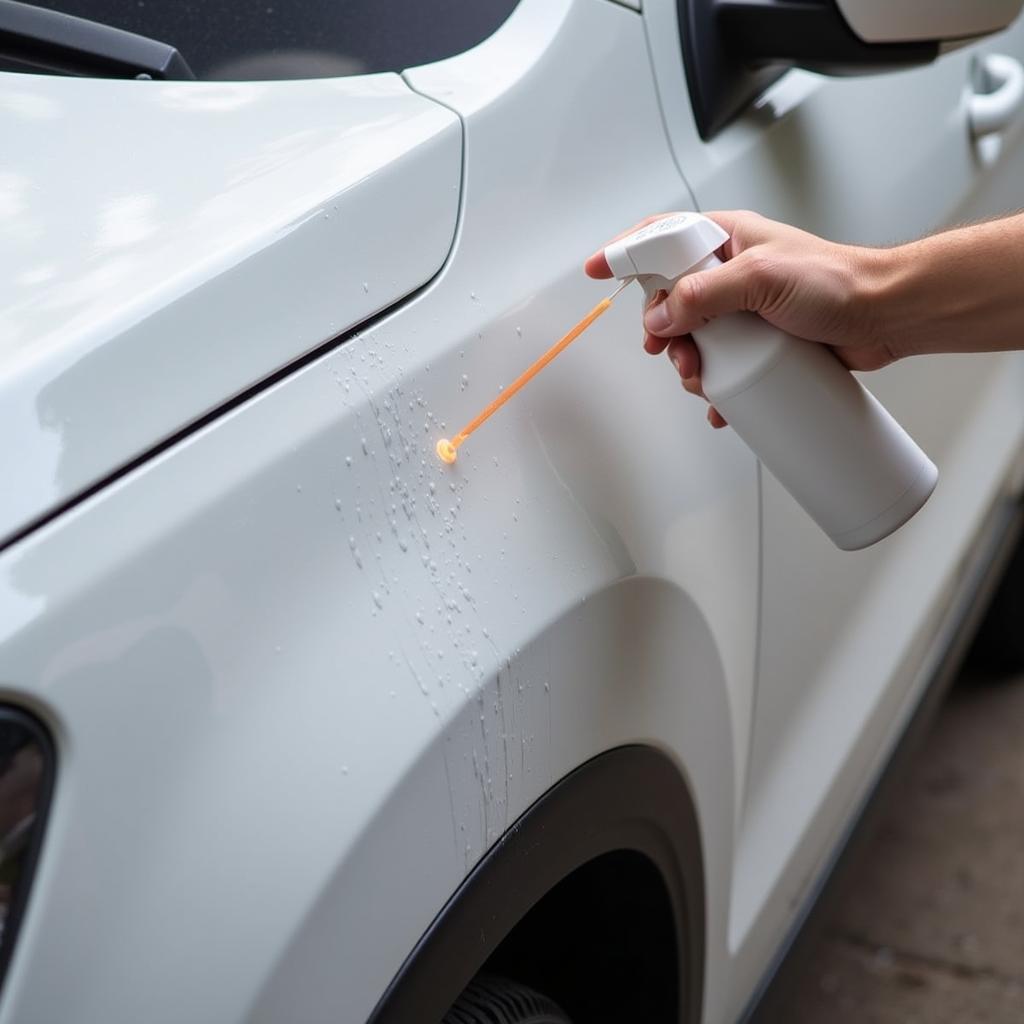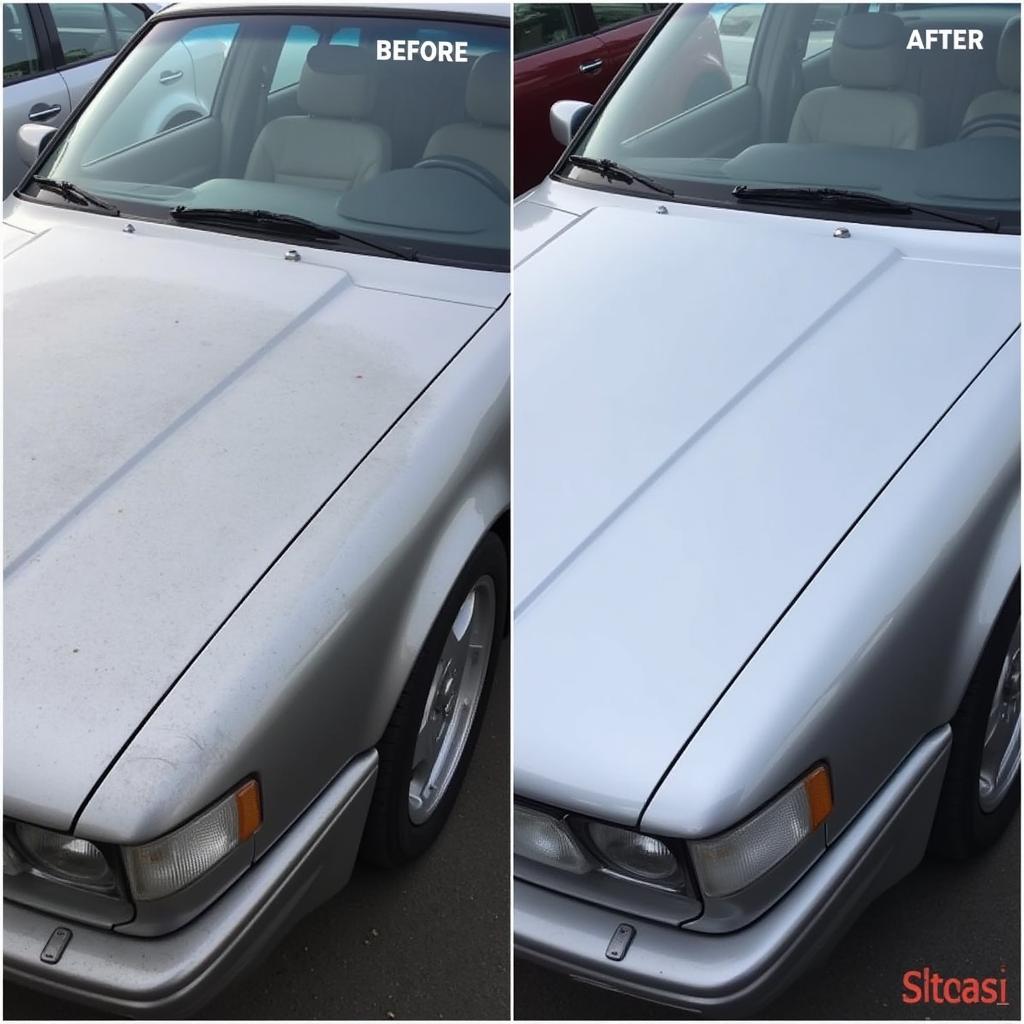Clay bars have revolutionized car detailing, offering a simple yet effective way to remove stubborn contaminants that washing alone can’t handle. They provide a smooth, glass-like finish, prepping your car’s surface for polishing and waxing. But what exactly are clay bars, and how do they work their magic?
Understanding Clay Bars and Their Benefits
Clay bars are not actually made of clay, but a synthetic resin compound designed to pick up microscopic contaminants bonded to your car’s paintwork. These contaminants include industrial fallout, brake dust, tree sap, overspray, and even embedded pollen. Imagine running your hand over a seemingly clean car and feeling a slightly rough texture. That’s the kind of contamination a clay bar targets, leaving behind a perfectly smooth surface. Using a clay bar is crucial for achieving a truly flawless finish, enhancing the gloss and depth of your car’s paint. It also ensures that your wax or sealant adheres properly, maximizing its protective qualities. Think of it like prepping a wall before painting – a smooth surface ensures an even and lasting finish. Similar to dmd car detailing, using a clay bar is a meticulous process that yields impressive results.
How to Use a Clay Bar Correctly
Using a clay bar is straightforward, but the proper technique is essential to avoid marring your car’s paint. First, wash and dry your car thoroughly. This removes loose dirt and grime, allowing the clay bar to focus on the embedded contaminants. Next, lubricate the surface with a dedicated clay lubricant or a detailing spray. This creates a slippery surface for the clay bar to glide over, preventing it from sticking and causing scratches. Knead the clay bar into a flat, pancake-like shape. This exposes a fresh surface and ensures even pressure distribution. Gently glide the clay bar across the lubricated surface in straight, overlapping motions. You’ll feel the clay bar grabbing the contaminants, and you might even hear a slight crackling sound. Fold and knead the clay bar frequently to expose a clean surface. If you drop the clay bar, discard it immediately. Contamination from the ground can scratch your car’s paint.
 Applying Clay Bar Lubricant to Car Panel
Applying Clay Bar Lubricant to Car Panel
Choosing the Right Clay Bar for Your Needs
Clay bars come in different grades, from fine to medium to heavy-duty. Fine clay bars are best for lightly contaminated surfaces, while medium and heavy-duty bars are suitable for more severe contamination. For most car owners, a fine or medium-grade clay bar is sufficient. Using too aggressive a clay bar can introduce minor marring, requiring polishing to correct. If you’re unsure which clay bar is right for you, consult a professional detailer or check online resources for recommendations. Much like the selection process for everything you need to detail a car, choosing the right clay bar is an important step in achieving optimal results.
Why Use a Clay Bar? What’s the Big Deal?
Using a clay bar isn’t just about achieving a smooth finish; it’s about enhancing the overall appearance and longevity of your car’s paint. By removing embedded contaminants, you’re preventing them from etching into the clear coat and causing permanent damage. A smooth surface also reflects light more evenly, resulting in a deeper, richer shine. This is especially noticeable on darker-colored cars.
“A clay bar treatment is like a facial for your car’s paint,” says renowned detailing expert, David Miller, founder of DMD Detailing. “It removes impurities and reveals the true beauty beneath, leaving a smooth and rejuvenated surface.” This resonates with the meticulous approach taken by professionals like those at detailers choice car care.
 Before and After Clay Bar Treatment on Car Hood
Before and After Clay Bar Treatment on Car Hood
Conclusion: Unlocking the True Potential of Your Car’s Paint
Clay bars are a valuable tool in any car detailer’s arsenal. They offer a safe and effective way to remove embedded contaminants, revealing a smooth, glass-like finish that enhances the beauty and longevity of your car’s paint. By following the proper techniques and choosing the right clay bar, you can achieve professional-level results and unlock the true potential of your car’s paint. For those looking for an exceptional detailing experience, exploring options like car pretty detail can provide further inspiration.
FAQ
-
How often should I use a clay bar? Typically, every 6-12 months is sufficient, depending on your driving conditions and environment.
-
Can I use a clay bar on all painted surfaces? Yes, but avoid using it on matte or textured finishes.
-
What should I do after using a clay bar? Follow up with a polish and wax or sealant to protect the freshly cleaned surface.
-
Can I reuse a clay bar? Yes, as long as you haven’t dropped it and it’s still pliable.
-
Do I need to use a specific clay lubricant? Yes, a dedicated clay lubricant is recommended to ensure proper lubrication and prevent marring.
-
What if I drop the clay bar? Discard it immediately to avoid scratching your car.
-
Where can I buy a clay bar? Auto parts stores, detailing supply shops, and online retailers all carry clay bars.
For more detailed information, you might find our articles on autospa express car wash & detailing bakersfield ca helpful. We also have articles that cover other detailing processes and product reviews.
Need support? Contact us via WhatsApp: +1(641)206-8880 or Email: [email protected]. Our customer service team is available 24/7.

Leave a Reply